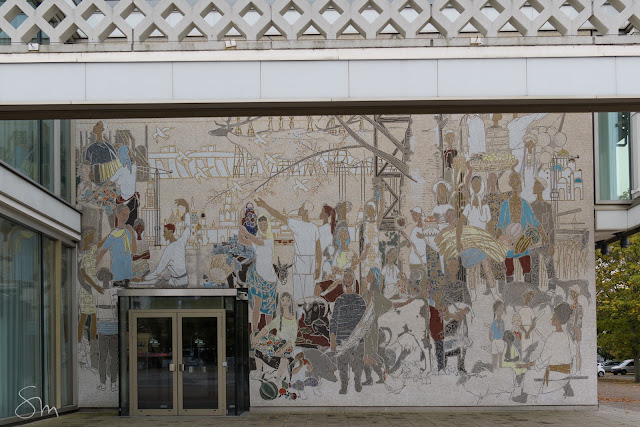In the deepest German winter, when the lights come on in the morning and are never turned off until bedtime, it is hard to imagine that spring and the reawakening of nature is just around the corner, a few months away.
As I know for sure that a winter depression will befall me each year, I decided last spring to make a series of photographs of my garden in all seasons to have something to look forward to. I chose the daily view from my kitchen window for this project.
Autumn view
The window goes north, so this corner of my garden is quite dark at all times of the year. When planning this corner, I devised a theme in green and white with bright leaves and white flowering shrubs that would be nice to brighten up the area.
Evergreen shrubs with interesting varied leaves dominate both sides of the path. Cephalotaxus harringtonia, the "head yew" with its distinctive needle heads, one for each year of growth, sits in a sheltered position in front of the wall of the house next to Camellia "Shiragiku" (behind) who needs a sheltered spot as well. It has been growing and thriving in this spot for the past 14 years. It prefers not to be exposed to wintry sun, so a spot facing west against a wall is always good for not so hardy camellias. In front, on the right hand side of the Cephalotaxus, I used to have a Buxus elegantissima, a white box tree, very rare, since 2003. Unfortunately, last year it succumbed to the ugly Chinese Buchszünssler moth and had to be removed.
April
Underneath we have hellebores, Symphytum grandiflorum album and on the corner the unusual Saxifraga pennsylvanica with its memorable name, which sends up a flowering stem each May.
On the left hand side, we have several white-flowering Viburnums, underplanted with hosta, wild strawberries, sweet woodruff (Galium odoratum) and pink azaleas in spring.
May
In the back before the path turns to the right and on around the house there is a white-leaved Euonymus, an ivy trimmed as hedge and Viburnum plicatum to the right. A red hazelnut is towering over them.
Between Cephalotaxus and the white Buxus we had planted Rodgersia. Now that the Buxus is gone, it enjoys the added space and has grown and filled the spot with its large pinnate chestnut-like leaves which turn a beautiful bright yellow-orange before they fall off.
October































































